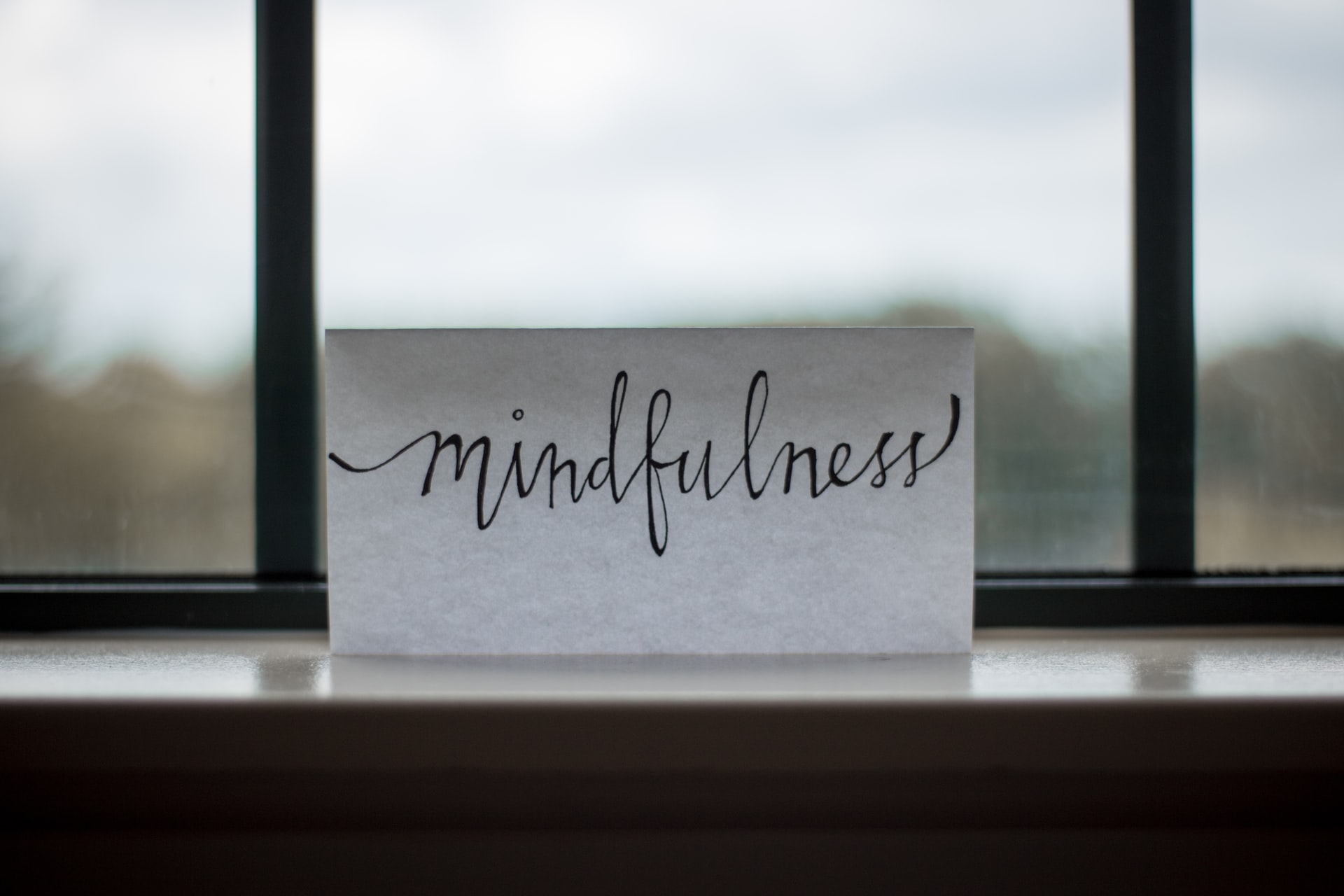Wellness • 02/18/2023
How to Practice Mindfulness for Beginners: 9 Activities

Revivalist is a reader-supported endeavor and our posts may contain affiliate links. When you buy through links on our site, we may earn an affiliate commission.
It’s everywhere, from television to your Apple watch. Mindfulness has swept the nation creating a team of beginners, but it’s far from a fad. It has its roots in ancient practices, and professional therapists today recommend it to clients to help them recover from various traumas and ease anxiety. It has impressive health benefits, including the potential to tame blood pressure and prevent heart disease.
How can you get started if you have never practiced before? There’s good news — you don’t have to begin on the mat in silent meditation. Some people find doing so intimidating.
Fortunately, you can begin your journey by doing many of the activities you already perform — with a thoughtful twist. Here are six ways to practice mindfulness for beginners.
1. Take a Walk
When was the last time you walked to the store and arrived only to realize you had no idea how you got there? So often, we wander through life without paying attention to all the magic around us each step of the way.
Mindful walking begins with the simple act of tuning in while you stroll. You can set aside a formal time for your practice — although it’s best to start small. Four minutes is plenty of time. As you stride, focus on how your feet and legs feel as they hit the ground. Notice the vibrations as they travel from your soles up to your knees and hips.
As you grow in your practice, you can add new elements to it, like inventive spaces in nature. For example, make your next walk a sensory experience. What do you see? Can you list as many as possible? What do you hear? Smell? Even taste? Marvel in the wonder that you see around you.
Leave your Airpods at home and instead practice getting in touch with your five outward senses first:
- Sight: Name five things you can see.
- Touch: List four sensations, such as the wind on your skin or the feel of your feet striking the earth.
- Sound: What can you hear? Are there birds chirping? Children playing?
- Smell: What can you detect in the air? Flowers? Fall leaves? Perhaps the echo of a distant fireplace?
- Taste: Open your mouth and taste the fresh air. Explore the sensations that hit your tongue.
2. Eat a Chocolate
Perhaps you heard about the mindfulness activity when you mindfully eat a raisin. However, you might not find it appealing if you don’t care for dried fruit. However, nearly everyone loves chocolate — but feel free to substitute another favorite for this exercise.
Before you unwrap your treat, take the time to look at it with curiosity. Unwrap it slowly, listening to the crinkle of the wrapper and inhaling the aroma. Before you take a bite, nibble and sniff the piece. Then, when you finally place it on your tongue, savor it as it melts. What does it feel like? How does the melting sweetness impact your mood?
3. Color a Picture
Do you remember the old joy of coloring? You might not have realized it as a small child, but you were practicing mindfulness when you sat down with your crayons.
Fortunately, you don’t have to go back to the days of coloring Spongebob — unless you want to, of course. Spongebob is awesome. However, you also have your choice of adorable animals or fanciful gardens, mandalas or even fanciful adult language.
Set aside at least five minutes to lose yourself in this activity. Pay attention to how the crayons feel crossing the paper. How does the wax feel against your skin? Perhaps you prefer markers or colored pencils — what makes that medium your favorite?
4. Write a Journal Entry
Writing is one of the most mindful activities you can do. Fortunately, you don’t need to pen a verse like Shakespeare to get the mental and emotional benefits of this activity. However, you should make it a celebration.
Instead, invest in the prettiest journal you can find. A print one is fantastic for keeping your private thoughts, although you can find apps that let you indulge in a few moments of mindfulness whenever you have free time alone with your phone.
Let your thoughts run free. You can use your journal to work through a problem that weighs on your mind, making lists of pros and cons. You can also free write about whatever comes to mind. Are you angry? Writing out your thoughts is much better than venting them at an innocent party.
5. Dance
Many beginners think mindfulness needs to mean sitting still — but it works with your body in motion. Regular practitioners remain mindful nearly every moment of their day.
To engage in mindful dancing, let your body get into the music. You can listen to your favorite tunes or something completely new — the idea is to select something that moves you.
Then, let the rhythm take over you. Try to become one with the music. Sometimes, slow, sensual movements are best. Other times, you may want to bang your head. Be in the spirit of the moment.
6. Sit Still
The ancients practiced mindfulness by sitting still. However, many modern minds find this practice frustrating. Your best bet is to start small — as little as two minutes. Many people find this length of time challenges them plenty initially, although they later expand their practices.
There’s no one correct way to sit in meditation. You might choose to lay down instead, especially if you have back pain that makes sitting upright on a cushion uncomfortable. There’s no need to take savasana, either. For example, you may meditate before you fall asleep in the evening. Many people find this more effective than counting sheep.
Once you take your position, focus your awareness on your breath. Try to shut out outside thoughts, but don’t feel dismayed when they intrude — it’s normal. Instead, observe them nonjudgmentally. Some people do so by imagining them as thought balloons drifting overhead. Others picture a scientist taking notes on a pad, then turning the page.
7. Practice Yoga
Yoga is the ultimate mind-body exercise and mindfulness practice — but only if you choose wisely. Popping into a hardcore Ashtanga class as a beginner will likely take you out of the moment as you wonder how many more minutes of “contortionist torture” you must endure.
Instead, make mindfulness the focus of your practice, perhaps beginning with these five poses for beginners. Take extra care to unite your breath and body movement. Pranayama is one of the most crucial parts of any yoga class, and it can keep you centered in the moment.
Try one of these techniques:
- Standing forward folds
- Seated twists
- Cat-cows
- Tree pose
- Seated straddle (turtle pose)
8. Dig in the Garden
Gardening can be a peaceful, mindful activity that puts you in touch with nature much like a walk. If you don’t have a yard, a few containers can help you grow beans and tomatoes.
Learn how to practice mindfulness as you dig by paying attention to the sensations in your hand as you turn the soil. Is it soft? Damp? Crumbly? Marvel at each plant as you place it in its new home — what does it have to tell you about life? Explore how your body feels as you bend, stretch and reach for various tools.
9. Try Meditation
Mindfulness meditation can seem intimidating and scary. It can be, especially if you have a history of trauma and find sitting in silence uncomfortable — an invitation to rumination.
Your solution for getting started? Begin small. Start by taking a comfortable position. You can sit or lie down — those with back problems might find it easier to take a supine pose. Ensure you’re warm and have plenty of quiet.
Set a timer for two minutes, and focus on nothing but your inhales and exhales. Remember that mantra? You might repeat to yourself, “Breathing in, I am aware that I am breathing in. Breathing out, I am aware that I am breathing out. In, out.”
However, be gentle. If thoughts intrude, return your focus to your breath without judgment or mental chastisement. You’ll be surprised how long two minutes feels if you’re new to the practice. Still, be patient — most people find this practice stress-relieving and centering in time and find themselves sitting for longer and longer periods.
Ways to Practice Mindfulness for Beginners
Mindfulness has captured news headlines because it can transform lives. However, getting started in the practice can seem intimidating for the uninitiated. Their therapists or doctors may suggest it, but they aren’t sure where to begin.
Try one of these six ways to practice mindfulness for beginners listed here. You’ll find greater enjoyment in daily life and benefit your mental health.
Subscribe to Our Weekly Newsletter
We would love to connect deeper with you!


